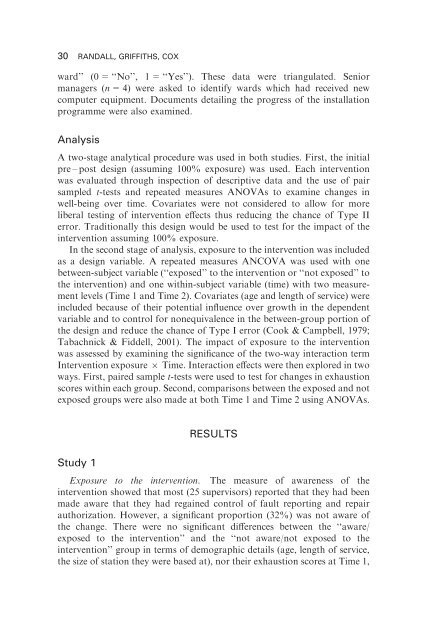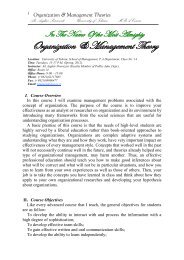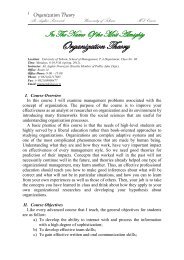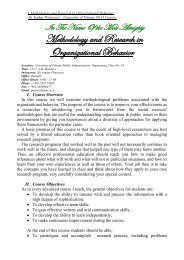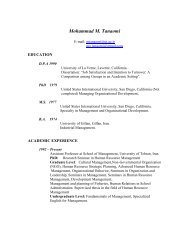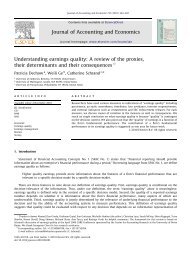Evaluating organizational stress-management interventions using ...
Evaluating organizational stress-management interventions using ...
Evaluating organizational stress-management interventions using ...
You also want an ePaper? Increase the reach of your titles
YUMPU automatically turns print PDFs into web optimized ePapers that Google loves.
30 RANDALL, GRIFFITHS, COX<br />
ward’’ (0 = ‘‘No’’, 1 = ‘‘Yes’’). These data were triangulated. Senior<br />
managers (n = 4) were asked to identify wards which had received new<br />
computer equipment. Documents detailing the progress of the installation<br />
programme were also examined.<br />
Analysis<br />
A two-stage analytical procedure was used in both studies. First, the initial<br />
pre – post design (assuming 100% exposure) was used. Each intervention<br />
was evaluated through inspection of descriptive data and the use of pair<br />
sampled t-tests and repeated measures ANOVAs to examine changes in<br />
well-being over time. Covariates were not considered to allow for more<br />
liberal testing of intervention effects thus reducing the chance of Type II<br />
error. Traditionally this design would be used to test for the impact of the<br />
intervention assuming 100% exposure.<br />
In the second stage of analysis, exposure to the intervention was included<br />
as a design variable. A repeated measures ANCOVA was used with one<br />
between-subject variable (‘‘exposed’’ to the intervention or ‘‘not exposed’’ to<br />
the intervention) and one within-subject variable (time) with two measurement<br />
levels (Time 1 and Time 2). Covariates (age and length of service) were<br />
included because of their potential influence over growth in the dependent<br />
variable and to control for nonequivalence in the between-group portion of<br />
the design and reduce the chance of Type I error (Cook & Campbell, 1979;<br />
Tabachnick & Fiddell, 2001). The impact of exposure to the intervention<br />
was assessed by examining the significance of the two-way interaction term<br />
Intervention exposure 6 Time. Interaction effects were then explored in two<br />
ways. First, paired sample t-tests were used to test for changes in exhaustion<br />
scores within each group. Second, comparisons between the exposed and not<br />
exposed groups were also made at both Time 1 and Time 2 <strong>using</strong> ANOVAs.<br />
RESULTS<br />
Study 1<br />
Exposure to the intervention. The measure of awareness of the<br />
intervention showed that most (25 supervisors) reported that they had been<br />
made aware that they had regained control of fault reporting and repair<br />
authorization. However, a significant proportion (32%) was not aware of<br />
the change. There were no significant differences between the ‘‘aware/<br />
exposed to the intervention’’ and the ‘‘not aware/not exposed to the<br />
intervention’’ group in terms of demographic details (age, length of service,<br />
the size of station they were based at), nor their exhaustion scores at Time 1,


